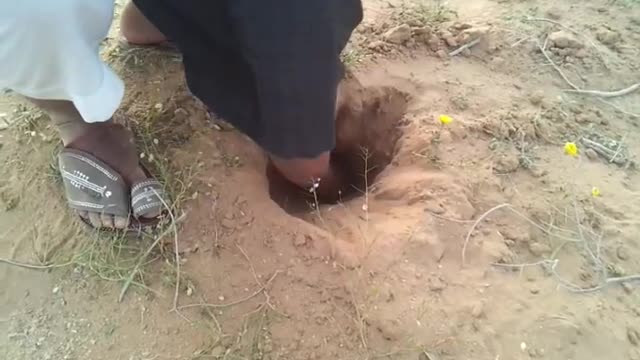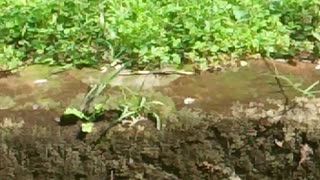Premium Only Content

Desert Lizard Trappe
Similar to all the other night lizards, the desert night lizard is viviparous (delivering young ones developed inside the body); it delivers 1 to 3 young live lizards during the months of August to December. The length of the night lizard is 11/2 to 21/2 inches; its tail is almost the same length. The color of the lizard is normally olive, yellow with brown tint or gray. Even though its name is night lizard, at times it becomes active during the day. They are famous for quickly changing their color from dull olive (normally at evenings) to deep brown at daytime. It is an excellent climber and generally feeds on small insects, termites, spiders and several other arthropods. It prefers semi-arid and arid areas. At day time It finds shelter in rock crevices and under fallen debris of desert plants. Generally, you can find them among varieties of yucca like the Spanish Dagger, the Joshia tree and Spanish bayonet.
Lizards in general, get together into family units comprising of father-mother pair and offspring; this system takes years for them to spread their species. Young ones, although talented in self feeding, will gather together among their own. Older siblings and the parents do not directly take care of the young ones, yet you can find little information about the benefits they receive from being with their parents. The baby lizards that are just the size of a toothpick are always in a state of proper camouflage. Here are some more really unique reptiles found in the desert.
Let us begin with the one and only poisonous desert lizard, The Gila Monster. These unwieldy and sluggish reptiles find safety in the desert. The Gila Monsters have good looks with varieties of color designs. They dislike handling or relocation.
These lizards confine to the desert with hardly any requirements including water. They have a simple and self satisfied life style. The mating male Chuckwalla has noticeable bright colors.
This is a proud desert lizard. This is everyone’s favorite Iguana lizard. They appear high spirited and arrogant. These lizards, with good looks, are among the lizards that bear temperatures of up to 110° F, while the other lizards go into hiding places, under shade, under rocks or into holes to escape the heat.
This is the great basin Collared Lizard with an appealing design on the body. His tail is very long; he has a set of healthy teeth and strong jaw muscles. He is one among the desert’s most appealing lizards.
The Sonoran Collared Lizard is another collared lizard. In the species of Collared lizards you will find some differences in their variations and colorization. When you enlarge a picture, you get a better view of the bands round their neck.
-
 1:16
1:16
cidamais
2 years agoLizard...
12 -
 0:38
0:38
LifeSourceChannel
2 years agoHappygrams Desert Dance
33 -
 1:03:51
1:03:51
Flyover Conservatives
1 day agoGeneration Z’s Revolution: 17 Year Old Author on the Return of Faith, Family, and the End of Feminism - Hannah Faulkner; Economic Update - Dr. Kirk Elliott | FOC Show
46.2K2 -
 1:12:43
1:12:43
Adam Does Movies
12 hours ago $20.94 earnedMoviegoers Are Singing Now! + Lilo & Stitch + Sonic 3 - LIVE!
81.5K7 -
 1:26:05
1:26:05
Donald Trump Jr.
15 hours agoRegime Media Imploding: What’s Next for MSNBC? Plus Michael Knowles & Alex Marlow | TRIGGERED Ep.194
232K245 -
 37:26
37:26
Glenn Greenwald
12 hours agoGlenn Takes Your Questions: On Trump's Cabinet, The G20 Summit, and More | SYSTEM UPDATE LOCALS SPECIAL
94.6K56 -
 2:10:20
2:10:20
We Like Shooting
19 hours ago $2.67 earnedWe Like Shooting 586 (Gun Podcast)
27K1 -
 52:14
52:14
Uncommon Sense In Current Times
14 hours ago $0.84 earned“Pumpkin Pie Politics: Bridging the Thanksgiving Divide to Protect The Family"
20K1 -
 1:01:28
1:01:28
The StoneZONE with Roger Stone
9 hours agoWhy Jack Smith Owes Americans Millions of Dollars for Fake Investigations | The StoneZONE
40.7K11 -
 3:50:40
3:50:40
Tundra Gaming Live
13 hours ago $2.74 earnedThe Worlds Okayest War Thunder Stream
39.2K